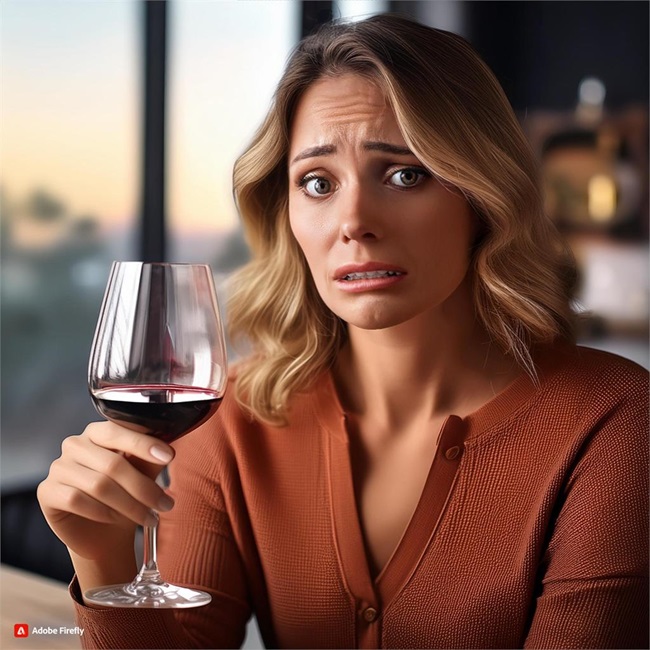Wine vs. Waistline: Beware the ‘Real’ Calorie Culprit is the main source of calories, but the real culprit is something else entirely as detailed below.
Understanding where calories in wine come from is key to making smarter choices and enjoying wine more fully relative to your lifestyle, whether you’re enjoying a rich red, a crisp white, or a glass of sparkling.

What’s amazing is that you can use the VinoVoss AI Sommelier app or web search to quickly and easily find wines with a LOW amount of the waistline-busting element. Interest in this topic as I hope?
Wine and Your Waistline: This is the ‘Real’ Calorie Culprit
Before we start pretending that we drink wine only to enjoy the “fruity character of juicy pears” and “notes of oak,” let’s get real. Wine has calories … and a decent amount at that. Here’s a breakdown of what you’re looking at:
100ml of wine (about 3.4 oz) typically has around 70-80 kcal.
A standard serving (about 150ml, or 5 oz) gets you up to 105-120 kcal.
A bottle of 750ml of wine has approximately 600-700 kcal.
To give you more context, a tin of Coke (330ml, or 11 oz) contains roughly 140 calories, about the same as a glass of red wine. A Big Mac burger is around 530 calories, a slice of pizza is around 250 kcal, and McDonald’s medium fries are 330 calories. Surprised? A bottle of wine contains the calories of your entire meal. You might have to think twice before opening that second bottle, as those calories can add up faster than you think.
Where Do Calories in Wine Come From?
You may think, “Calories come from sugar, so I’ll just drink the driest wine.” Surprisingly, sugar isn’t the big villain in wine calories—alcohol is. One gram of alcohol packs 7 kcal, while one gram of sugar has 4 kcal. That means the higher the alcohol content, the more calories your wine contains, regardless of how unsweet it tastes.
To put this in perspective, let’s look at some popular wines: a semi-sweet Moscato or an off-dry Riesling contains more sugar but typically has lower alcohol, giving you around 110-130 calories per glass (5 oz). Meanwhile, a full-bodied Napa Cabernet Sauvignon, with its higher alcohol content and little residual sugar, comes in at around 150-160 calories per glass. So, while the Moscato might seem like the sweeter “indulgence,” the alcohol in that Cab is quietly adding more calories than you’d expect.
Let’s not forget dessert wines like Tokaj, Sauternes, or fortified wines like Port and Sherry. These deliciously sweet, indulgent wines can pack up to 250 calories per glass, but here’s the catch – the serving size is typically half that of a regular wine serving. Instead of 150ml (5 oz), dessert wine servings are closer to 75ml (2.5 oz) or less, so while they’re sweet and calorie-dense, you’re technically sipping less.
For lovers of Champagne and sparkling wine, calories can vary depending on the style and the amount of sugar, or “dosage,” added during production. Dosage refers to the sugar added after the second fermentation, which balances acidity and influences sweetness.
The driest styles, like Brut Nature or Brut, contain very little sugar and typically range from 80-100 kcal per 100ml (3.4 oz). Extra Dry versions have a touch more sweetness but still remain under 110 calories. On the sweeter end of the spectrum, Demi-Sec styles can reach 120-130 kcal per 100ml, offering a more indulgent sip but with a calorie count to match.
In essence, alcohol calories sneak up on you faster than sugar ever could. So, next time you’re opting for a rich, bold red, remember it’s the alcohol doing most of the damage, not just the sweetness.

Low-Calorie Wine Options
If you’re trying to balance your love of wine with your fitness goals, don’t worry! There are still ways to enjoy your favorite wine more consciously. One option is to go for low-alcohol wines, which naturally have fewer calories. Wines with an ABV (alcohol by volume) of 9% or lower can save you quite a few calories per glass. Think of light white wines like Vinho Verde or a Mosel Riesling, which tend to hover around the lower end of the alcohol spectrum and still deliver plenty of character without the extra calories.
Another option is to explore non-alcoholic wines. In recent years, non-alcoholic wines have come a long way in terms of flavor and quality. Non-alcoholic wines typically contain 20-30 calories per glass, a fraction of what you’d find in a standard pour of wine. You still get the experience of sipping wine without the hefty calorie load or the morning-after regret.
But maybe, just maybe, you don’t want to give up your favorite bold red or buttery Chardonnay. In that case, the solution is simple: hit the gym, do more cardio. A 30-minute jog burns roughly 300 calories, which could more than offset a couple of glasses of wine. It’s all about balance, right? You can have your wine and enjoy it too – just be prepared to burn off those calories the next day.

Wine consultant Sylvia Ba is a vinicultural expert with the “VinoVoss” AI Sommelier wine search engine and recommendation system developed by BetterAI.
The user-friendly online platform picks the perfect wine every time, for any occasion courtesy of a highly advanced artificial intelligence assist. With a master’s degree in wine business from Burgundy School of Business, as well as diverse background and experiences in Europe and Asia, she currently offers expertise in marketing, research, purchasing, and copywriting for clients in the wine industry all over the world.
Sylvia’s experience includes working as a junior editor for a leading Chinese wine media outlet and as a fine wine salesperson for ASC Fine Wines, the largest fine wine importer in China. She also served as Export Manager for Vinum Hadrianum, an artisanal winery in Abruzzo, Italy. Reach her at www.vinovoss.com.
